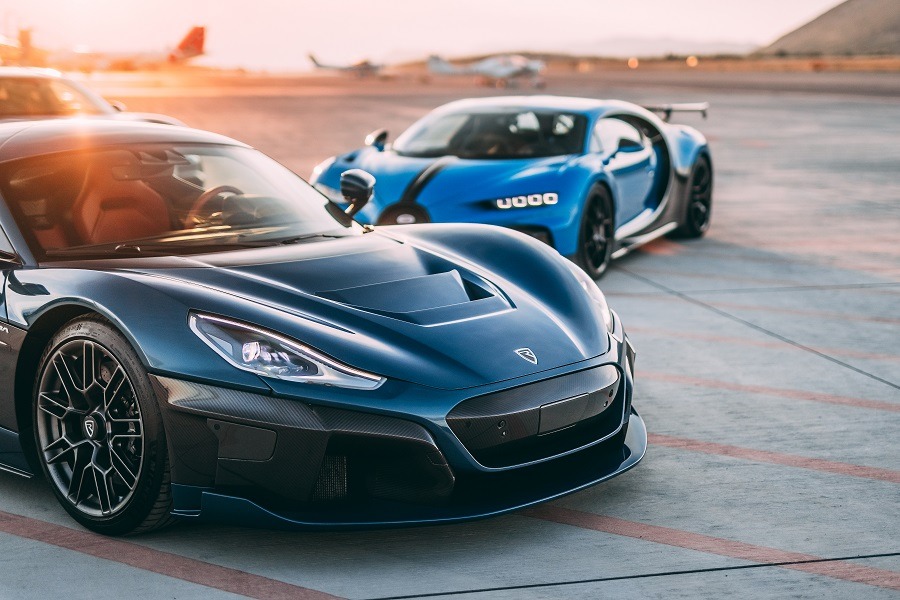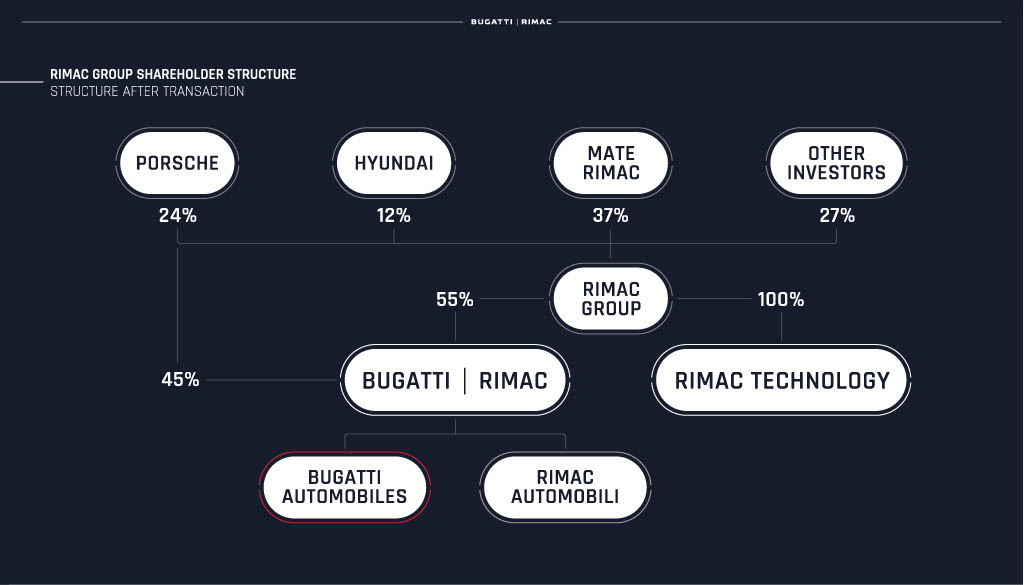Porsche and Rimac form joint venture to incorporate Bugatti
06 July 2021

Rimac Automobili and Porsche have announced a joint venture (JV) that will incorporate the Bugatti brand. The new hypercar company will be 55% owned by Rimac, with Porsche holding the smaller share.
The Croatian carmaker is forming a new company, Rimac Group, to oversee the venture. This new business will be split between founder and CEO Mate Rimac (37%), while Porsche will take a 24% stake. Hyundai Motor Group also has a 12% share, while the remaining 27% is divided amongst other investors. This deal highlights the increasing cross-collaborations taking place within the automotive industry.

The JV will be named Bugatti Rimac. Both brands will continue to operate independently, with Rimac Automobili retaining its current premises on the outskirts of Zagreb, Croatia and Bugatti production continuing in Molsheim, France. Under the umbrella of the new company, the Bugatti and Rimac brands will initially produce two hypercar models: the Bugatti Chiron and the all-electric Rimac Nevera.
New technologies
Going forward, the carmakers will pool resources and expertise in research and development (R&D), production, as well as other areas.
In time, Bugatti Rimac’s global headquarters will be located at the recently announced Rimac Campus, also serving as the home of Rimac Technology. The €200 million, 100,000m2 campus, due to open in 2023, will be the base for all R&D for future Rimac and Bugatti hypercars.
‘We are combining Bugatti’s strong expertise in the hypercar business with Rimac’s tremendous innovative strength in the highly promising field of electric mobility,’ commented Oliver Blume, chairman of the executive board at Porsche AG. ‘Bugatti is contributing a tradition-rich brand, iconic products, a loyal customer base and a global dealer organisation to the joint venture. In addition to technology, Rimac is providing new development and organisational approaches.’
Along with Bugatti Rimac, the Croatian OEM will form another subsidiary, Rimac Technology. This business will oversee the development, production and supply of battery systems, drivetrains and other electrically-chargeable vehicle (EV) components that many other automotive manufacturers use. This business will remain an independent company.
Electric future
Bugatti came back into the limelight in the latter part of the 2000s, with the launch of the Veyron, the world’s fastest road-legal car. With a top speed of 253mph and 1,000bhp, the carmaker was positioned as a ‘shop window’ for parent company Volkswagen (VW) Group, demonstrating what was possible with internal-combustion engine (ICE) technology.
However, it is reported that VW Group lost around €4 million for each Veyron produced. Following this, the carmaker launched the faster Chiron, in limited numbers. As the automotive industry adjusts to a new normal, with electrification a priority and the economic impact of COVID-19 still being felt, such spending is considered frivolous. VW Group is focused on an electric future with the launch of its ID. family and the transition of Audi to a battery-electric vehicle (BEV) only carmaker.
Therefore, the integration of Bugatti into the Rimac family will allow the hypercar manufacturer to progress into the electrification of the automotive industry.
‘This is a truly exciting moment in the short yet rapidly expanding history of Rimac Automobili,’ added Mate Rimac. ‘We have gone through so much in such a short space of time, but this new venture takes things to a completely new level. Rimac and Bugatti are a perfect match in terms of what we each bring to the table. As a young, agile and fast-paced automotive and technology company, we have established ourselves as an industry pioneer in electric technologies.
‘With the Nevera, we have also proven that we can develop and manufacture outstanding hypercars that are not only fast but also exciting and high-quality. Bugatti, with over a century of experience in engineering excellence, also possesses one of the most exceptional heritages of any car company in history.’